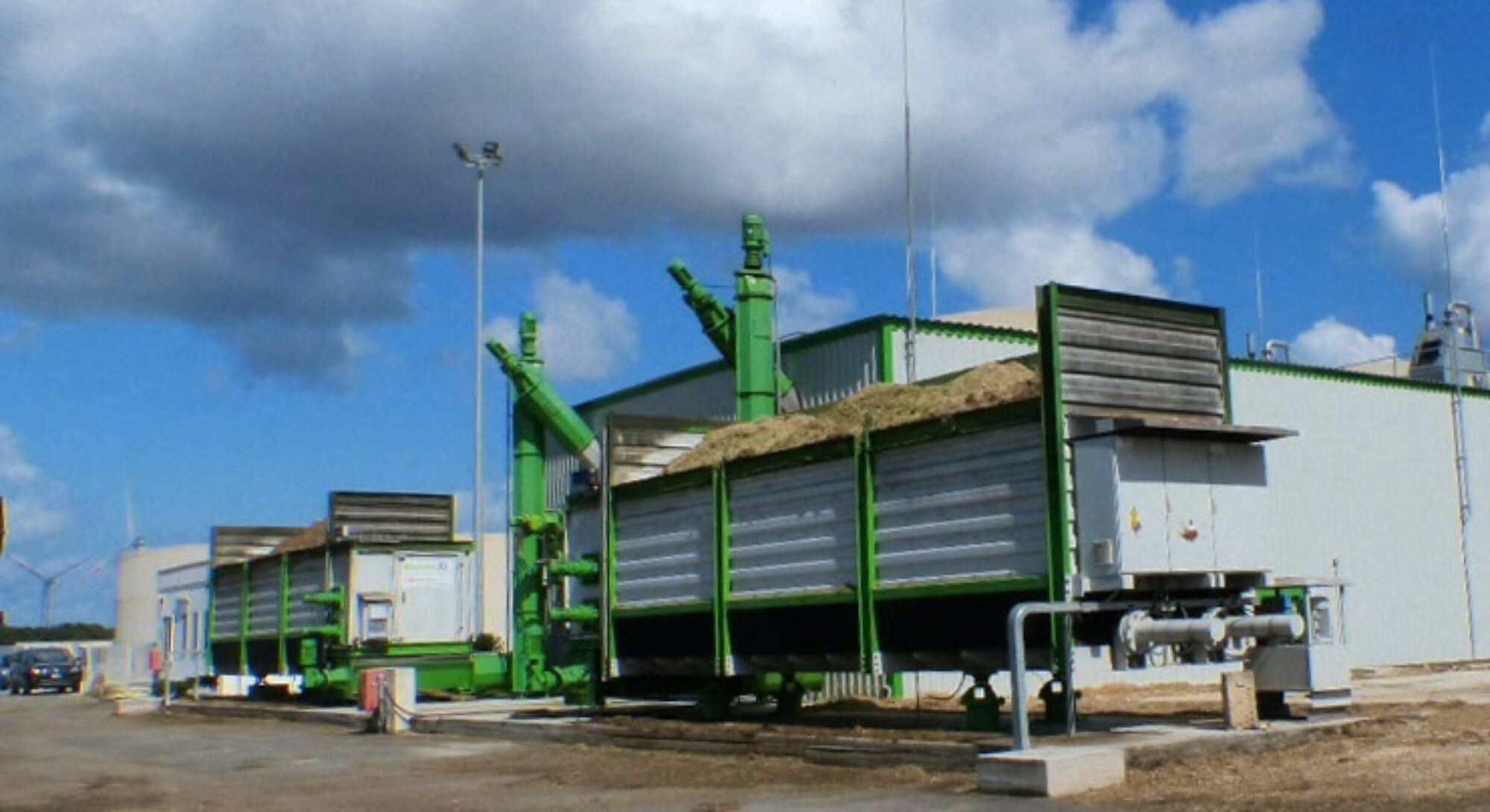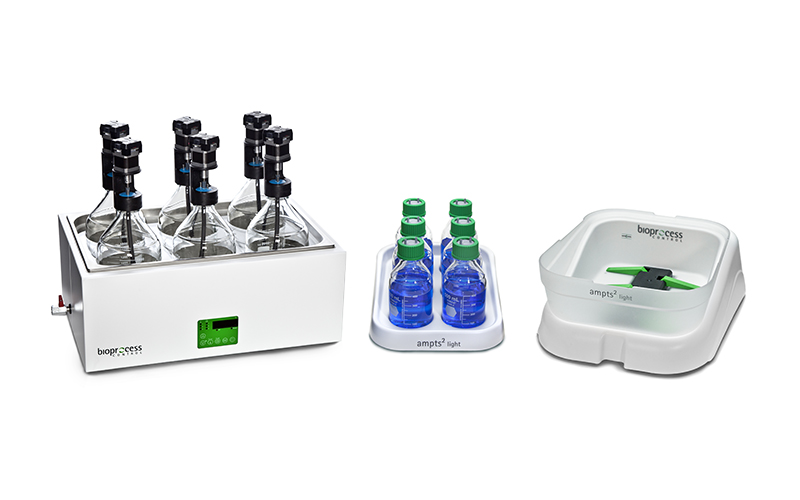Last Updated on 23/08/2020 by Piero Mattirolo
The specific methanogenic activity (High school): a very useful test but still to be normalized. Re-publication of an article by Mario A. Rosé on Agronotizie
“I often say that when you canto measure what you are talking about, and express it in numbers, thensai something of it; but if you can'tmeasure it, if you can't express it in numbers, your knowledge is meager and unsatisfactory; it can be the beginning of knowledge, but he will not have allowed you, in your mind, to advance in the progress ofscience, whatever the discipline”.
William Thomson, The Barons of Kelvin (Lesson on “Electrical units of measurement”, 3 May 1883)
The selection of the most suitable inoculum, to start (or restart) a biogas plant, it's a practical problem often underestimated. A biogas plant is a bacteria farm, therefore its optimal management is based on the same principles as a livestock farm: selection of the most suitable breed and scrupulous monitoring of the health of each individual animal. In the case of a cattle breeder, the distinction between meat and dairy animals is obvious and a visit to the veterinarian is enough to determine the general health of the herd.
But how can the manager of a biogas plant choose the most suitable inoculum to achieve maximum productivity, in the shortest possible time? How do you measure such an elusive concept as “the state of health” of bacteria?
In the biogas industry, various and mostly useless methods are in vogue, because they are based on indirect evidence and logical fallacies (see you: Resizing the importance of the Fos / Tac test, The electrical conductivity of the digestate is unreliable for running the biogas plant eThe foam meter for biogas plants). Often companies supplying biological assistance services to biogas plants make use of countless – and expensive– chemical analyses, these are also relatively useless because the presence or absence of some compound does not necessarily guarantee the biological activity of the digestate.
The simplest way to quantify the viability of bacteria is to measure their respiratory rate.
This is a very useful proof why:
- It is very selective. Depending on the reference substrate used (carbohydrates, proteins, lipids, acetic acid) it is possible to measure the consistency and viability of different groups of bacteria – hydrolytics, proteolitici, lipolytics, methanogenic- that make up the flora of the digester.
- It is very simple to make directly in the plant. You don't need to be a biochemist or biologist, you just need to equip yourself with the right equipment and follow a very specific method.
The test consists in taking a digestate sample, add a known amount of acetic acid (or sodium acetate), and observe the total amount of methane produced and the rate of production. Conceptually it seems like an easy solution, but unfortunately we have to deal with the 13° Murphy's law it says: “The easy solution of a problem always generates a more difficult problem to solve”. In this case the most difficult problem is to reach a universal consensus on which should be considered the reference substrate to be used, in what quantity, how long the test should last, and how to define the acceptable methanogenic activity threshold.
COD, SV, BMP e SMA: some useful definitions to navigate in the jungle of criteria
The first step in being able to measure something is define the unit of measurement. In the specific case of the measurement of methanogenic activity, practically every researcher has invented a different way to perform the test and to express the results. Although the substrate of reference most cited in the literature is sodium acetate or acetic acid, many studies on methanogenic activity have been carried out with other substrates: mixtures of volatile fatty acids in different proportions, the salts of the same acids, methanol, ethanol, glucose, sucrose, phenol… In the literature there are studies carried out even with substrates that certainly cannot be considered “of reference” because they are very variable in composition: molasses, beer malt and raw cane sugar.
This unequal criteria represents a problem for those who want to rationally manage a biogas plant, based on measurable scientific evidence rather than on indicative tables or self-referential statements of self-styled ones “biology”. It is therefore necessary define standard units and methods of measurement, so that the results expressed in different ways can be compared with each other. Because the confusion is so great, even among the “biology” and insiders, it is useful to do a little review of the basics, before going into the techniques for performing the SMA test and its practical application to biogas plants.
- The anaerobic degradation of acetic acid by theArchaea acetoclastiche it is a process that can be done “express in numbers” using the following stoichiometric formula: C2H4THE2 (you. anaerobic) -> CH4 + CO2
In numbers: 1 mole of acetic acid (60 grams) makes one mole of methane (16 grams or 22,4 Ndm3) plus one mole of carbon dioxide (44 grams or 22,4 Ndm3). In unit values, the methane yield of pure acetic acid is therefore equal to 373 Ncm3/grams. - If we consider sodium acetate instead of acetic acid:
C2H3No2 + H2THE (you. anaerobic) -> CH4 + NaHCO3
As in the previous case, a mole (82 grams) of sodium acetate makes 22,4 Ndm3 of methane, or 273 Ncm3/grams. The only difference from the previous case is that sodium in aqueous medium “capture” carbon dioxide, forming sodium hydrogen carbonate (bicarbonate), then – in theory– the biogas that comes out of the reactor is pure methane. - It can be shown by a stoichiometric calculation that the anaerobic digestion of organic matter always produces CH4 e CO2, in quantity and proportion that depend on the quantities and proportions of C, H and O present in biomass. There are three units of measurement of the quantity of C in organic matter: theCFROM (Chemical oxygen demand or the amount of O2 necessary for the total oxidation of the substrate), iSV (Volatile solids, or the fraction of dry matter excluding ash) and theTOC (Total organic carbon). The first two are the most popular because their measurement procedure is simpler.
Let's see what are the differences among the various criteria:
• COD. If we take sodium acetate as “molecule model” of anaerobic digestion, its total oxidation can be represented with the following equations:
C2H3No2 + 2THE2 -> 2CO2 + H2THE + NaOH
2C2H3No2 + 4THE2 -> 4CO2 + 3H2THE + On2THE
In the first case, two moles are needed (64 grams) of oxygen to produce the complete oxidation of a mole (82 grams) of sodium acetate, in the second case, double oxygen is needed for double acetate. Then, in both cases the sodium acetate code is the same, equal to 64/82 = 0,78 grams of O2/grams acetate.
If, on the other hand, we take acetic acid as “molecule model”:
C2H4THE2 + 2THE2 -> 2H2THE + 2CO2
Therefore the acetic acid code is equal to 1,066 grammi O2/grams or, taking into account its density, 1,12 grammi O2/cm3.
•SV. If, on the other hand, we want to characterize sodium acetate according to its Sv, we are faced with a problem because the equations presented in the previous point represent two solutions, depending on what the oxidation reaction is – which will depend on the experimental conditions in which the Sv. Then 82 grams of anhydrous acetate will leave 40 grams of ash in one case or 164 grams of acetate will produce 62 grams of ashes in the other. For definition, the Sv are therefore equal to:
SV1 [%] = 100 x (SS – Ashes) / SS = 100 (82 grams– 40 grams)/82 grams = 51,2%
SV2 [%] = 100 x (SS – Ashes) / SS = 100 (164 grams – 62 grams)/164 grams = 62,2%
In practice, we will always obtain values of Sv included between the two theoretical limits indicated above, depending on the calcination temperature of the acetate sample.
If, on the other hand, we take acetic acid as “molecule model”, it is impossible to characterize it in terms of Sv: by definition it is 100% volatile, as a liquid and free of minerals. - From the previous paragraphs we deduce the following practical relationships:
• BMP of sodium acetate = 273 [Ncm3/grams acetate] / 0,78 [COD grams / acetate grams] = 350 Ncm3/grams COD. Since the SV of the acetate may vary depending on the calcination temperature, it is not reliable to use this parameter.
• BMP of acetic acid = 373 Ncm3/grams /1,066 COD grams / grams = 350 Ncm3/grams COD.
• It can be mathematically demonstrated that the BMP of any organic matrix is always equal to 350 Ncm3/grams COD, provided, however, that this matrix is 100% digestible. The same is not true for SVs: the variability of the BMP as a function of the SV is impossible to parameterize, so they are not a unit of measure “comfortable” to evaluate the methanogenic activity of a digestate. To measure the methanogenic activity it is therefore sufficient to introduce it into the reactor “1 gram of COD” (regardless of the substance you choose or have at the moment) and observe if it gives off 350 Ncm3 of methane. We will see in the Part II what does it mean “1 gram of COD” of any organic matrix.
Conclusions
The measurement of the specific methanogenic activity (High school) is a technique for expressing in numerical terms the “vital constants” of theArchaea, which are the group of microorganisms responsible for the production of methane, last stage of anaerobic digestion. The measurement of the SMA is based on the fact that theArchaea Acetoclastic methanogenes feed exclusively on acetic acid (or its salt, sodium acetate), however indigestible substance for the other microorganisms that make up the flora of the digestate. Then, adding a known quantity of this substance to a known quantity of digestate, and observing how much methane is released, it is possible to deduce whether the digestate actually has an active population ofArchaea.
Moreover, the relationship between the methane flow rate and the mass of organic matter contained in the digestateprovides a numerical measure of the respiratory rate, that is, the biological activity of the population ofArchaea.
In Part II of this article we will see which are the “tricks of the trade” that a good biogas plant operator must know in order to perform a test correctly and how to interpret the results to optimize profit.


